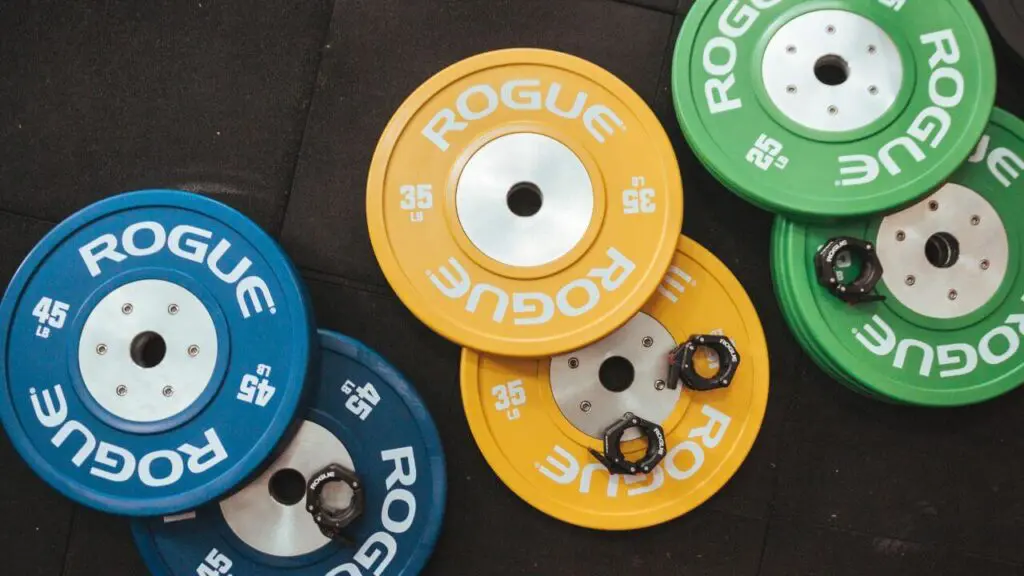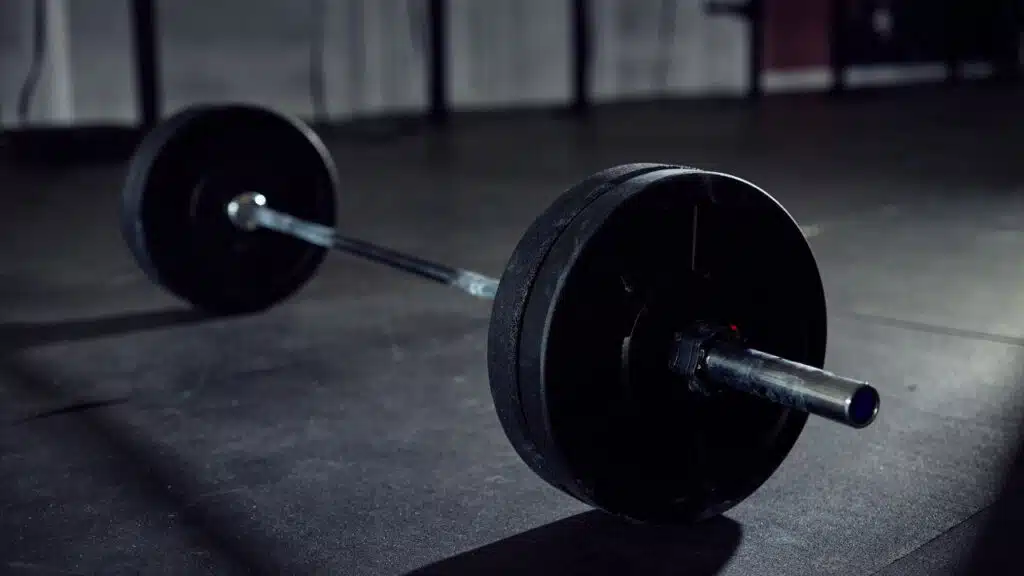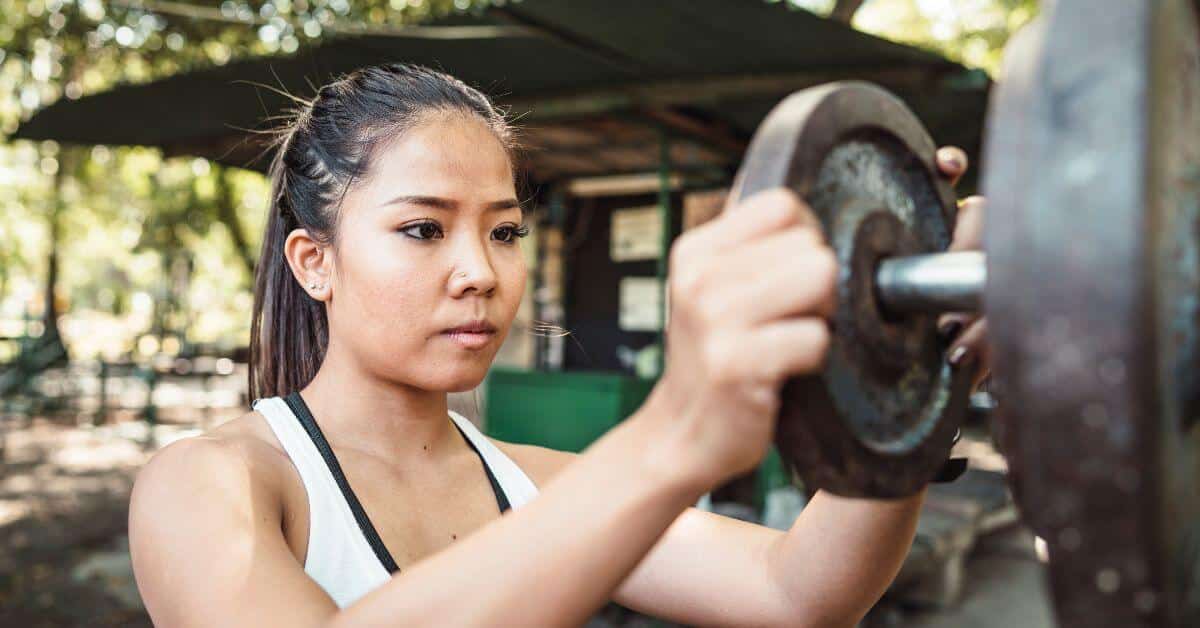Deadlifts, bench presses, squats – countless exercises require placing weights on a barbell.
Table of Contents
ToggleCorrectly setting the weights on the bar will prevent them from falling and make it easier for us to do the exercise correctly and prevent potential injuries.
In this article, I will explain everything you need to know about placing weights on a barbell.
How to Load a Barbell?
To load a barbell safely and without injuries, place weight plates in the correct order from biggest to smallest and put the collars on each end of the barbell. In addition, If you aren’t using an Olympic barbell, alternate between sides when placing the weight so the barbell doesn’t tip over. The barbell only tips over when the bar isn’t constructed as the Olympic ones are, so take great care to avoid injuring yourself.
Start Building Your Dream Body Today
Ready to elevate your fitness game without falling into the trap of dull, repetitive routines that just don’t deliver? Imagine sculpting your ideal physique and boosting your health, all while still enjoying life’s pleasures, like those irresistible weekend getaways and your aunt’s legendary cheesecake. With our online fitness and nutrition coaching service, you don’t have to compromise. Dive into a personalized fitness journey that blends perfectly with your lifestyle, not against it. Book your completely free discovery consultation today, and take the first step towards a transformation that doesn’t require giving up the joys of life.

“I was skeptical about online fitness coaching, but Functional Body Savage completely changed my perspective. Vanja and Radomir’s personalized approach and attention to detail have helped me achieve goals I never thought possible. I’m stronger, more confident, and grateful for their guidance.”
Emily Thompson, San Francisco, CA
Learn More About Our Online Coaching ServiceQuick Summary
- There are several types of weight plates. You choose Olympic, standard, or bumper plates depending on the gym and your needs. They differ in diameter, i.e., in which barbell they can be placed.
- Always put the heaviest weights on the bar first because you prevent problems with lifting weights at the start.
- It would help if you used bumper plates for deadlifts. To do this exercise safely, you must place the heaviest weights first. Always first look for bigger plates. Also, all weights must have the same diameter.
How to Choose the Right Weight Plate?

Olympic weights are one of the highest-quality weights to work out with, but they can be tough on beginners.
How to choose the right bumper plate depends on what you want to get from the exercise that you are doing. There are many weights you can use or meet at a local gym, but most usually are two types of plates.
Olympic plates are the most common in fitness industries. With the 2”(50.6mm) diameter center hole, they are beneficial because most of the barbells or other gym equipment fit them perfectly.
On the other side, standard discs are commonly used as the first choice in home gyms. The key thing about them is that they don’t fit the Olympic barbell because their diameter is 1″.
With this in mind, be careful when you buy an accessory For your home gym, and you wouldn’t have any problem.
So, your choice of the proper weight plates depends mainly on the barbell you use.
How to Get the Order of the Weight Plates Right?
To get the order of the weight plates right while barbell loading, you need to place the heaviest weights first and then the other.
When you put the weight plates on your barbell, the key is to have the same weight on both sides.
Regardless of the size or type of weight, you must always place the heaviest weight first.
For example, if you want to put 15 pounds on both sides, and have only weights of 10 and 5 pounds, then you should put the 10 pound weights first.
After that, you must put on a pair of weight bar collars to prevent them from falling from the bar.
How to Load a Barbell for Deadlifts?

Always use collars to load heavy deadlifts if you are not an experienced lifter since you can easily get injured.
To load a barbell for deadlifts, you must place the heaviest weights first. Also, it would be better to use the plates with the same diameter.
When we do deadlifts, it’s not essential to just put the weights on the bar and start exercising.
On the contrary, there are several things that we must do for exercise to be safe and successful.
In the first place, we should use bumper weights.
By nature, they are larger and narrower than other weights, and the rubber lining provides safety and absorbs the force of a fall if that happens.
In order to prevent the weights from falling, placing the weight bar collars on both sides is crucial.
In addition to this, it is essential to do the following things:
- Place the heaviest weights on the bar first – as we said before, the heaviest weights always go first.
- We use the heaviest weights – if we need a total weight of, say, 20 pounds, we will always look to put two ten-pound weights, then four five-pound weights.
- All weights must have the same diameter – if they don’t have the same size, it will happen that when lowering the weights to the floor, the ones that hit the floor will not touch the surface and thus will make the exercise more challenging.
“The deadlift is often considered a highly functional movement, as it teaches you to pick things up off the ground. This is something we all do a lot in our day-to-day lives, and it’s something that leads to injury for a lot of people.” – Adam Sinicki, AKA The Bioneer, author of the Functional Fitness and Beyond
How to Load a Barbell on the Floor?
To load a barbell on the floor can be pretty tricky. But there are various tricks and shortcuts that make this task easier.
In the first place, we must always place the heaviest and heaviest weights first. The easiest way to do that is to raise the bar a little off the ground on one side in order to get an angle from which we can place the weights.
After placing the weights on one side, we place the weight collar bar.
Now we can do the same thing on the other side of the barbell. Then we set smaller weights using the same method.
When we decide that we want to take off some weights or put on new ones, we always pull the weights slowly toward us.
It is the easiest and, at the same time, the safest way to remove weights from the barbell.
Tips for Loading a Barbell Safely and Correctly
- Put the barbell on the rack: This is practically the easiest way for adding plates to the bar. Prevents potential bruises but also more serious injuries that can occur when, for example, placing weights on the floor, such as blows to the foot, leg, and the like. Place the barbell on the squat rack, put the weights, and exercise.
- Load weights in the correct order: as we have already mentioned, the first plates are the heaviest. Then we put on lighter weights. The first plate is always the heaviest plate, and the last plates are always the smallest and lightest.
- Attach a barbell collar: This is practically the most important thing of all, which prevents potential injuries the most. If we don’t put at least a collar on both sides, we risk our weights falling off the loaded bar, and we put ourselves in danger. It is also crucial to tighten the collars properly so that the weights do not move and cause us problems.
Read our guide about the top affordable squat racks, where you can discover options that offer both durability and quality workouts without wasting your precious dollars.
Related Articles:
- 19 Different Types of Barbells for All Training Styles
- How Much Does a Barbell Weigh?
- How to Clean Rust off Barbell?
FAQs
Does It Matter How You Load the Barbell?
Yes, it does matter how you load a barbell. Correctly loading the barbell means always putting the weights in order, from heaviest plates to lightest. If you don’t put them in the order, you will have a problem lifting them, and potentially, you can injure yourself.
Why Do Barbells Not Tip Over?
Barbell doesn’t tip over because of the thickness of the barbell, its weight, length, and many other factors. If you put the weight on the tip of your bar, it would tip over because it can withstand a little more weight than planned.
How Do You Load a Barbell Safely?
You can load a bar safely if you put it on a power rack and then put the weights, or put a barbell on the floor and first one side of the bar and put the weights on, then do the same thing to the other side. After that, you should put on weight bar collars, and you can exercise safely.
How Much Weight Should I Put on the Barbell?
It depends on your training goal and current fitness level for how much weight you should put on the barbell. For beginners, it is best to start with light weight, for example, aim for 50% of your one rep max of the specific exercise.
What Is the Best Way to Load a Barbell Safely?
The best way to load a barbell safely is to put it on the rack, put the weights in the order from heaviest to lightest and put weight bar collars on both sides.
This way, you will prevent potential light and serious injuries and ensure safe and successful exercise.
Placing weights in the right and safe way will facilitate your daily exercise, improve your performance and the essential thing, prevent potential severe and minor injuries, and train and work on your body carefree.
I invite you to share with me in the comments below how you load weights on the barbell.
Start Building Your Dream Body Today
Ready to elevate your fitness game without falling into the trap of dull, repetitive routines that just don’t deliver? Imagine sculpting your ideal physique and boosting your health, all while still enjoying life’s pleasures, like those irresistible weekend getaways and your aunt’s legendary cheesecake. With our online fitness and nutrition coaching service, you don’t have to compromise. Dive into a personalized fitness journey that blends perfectly with your lifestyle, not against it. Book your completely free discovery consultation today, and take the first step towards a transformation that doesn’t require giving up the joys of life.

“I was skeptical about online fitness coaching, but Functional Body Savage completely changed my perspective. Vanja and Radomir’s personalized approach and attention to detail have helped me achieve goals I never thought possible. I’m stronger, more confident, and grateful for their guidance.”
Emily Thompson, San Francisco, CA
Learn More About Our Online Coaching Service





